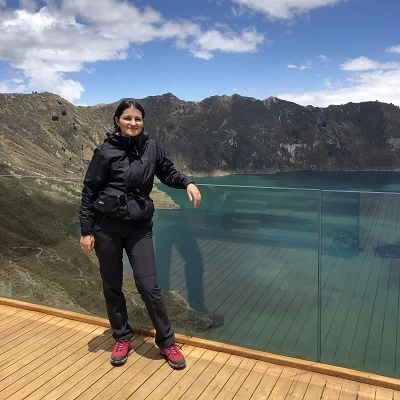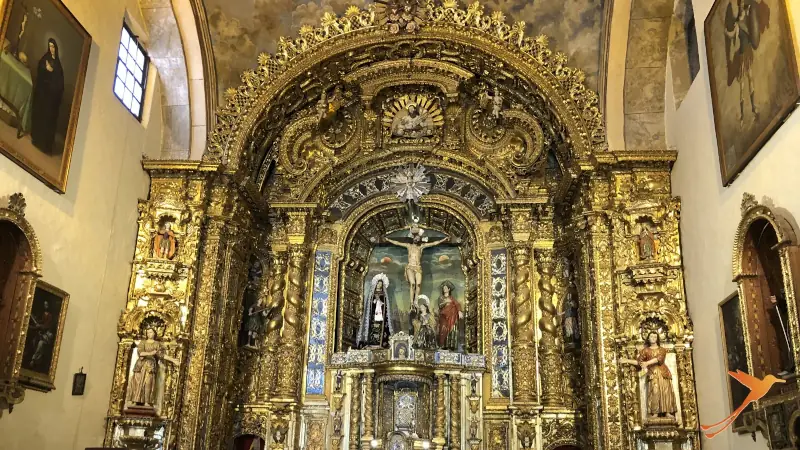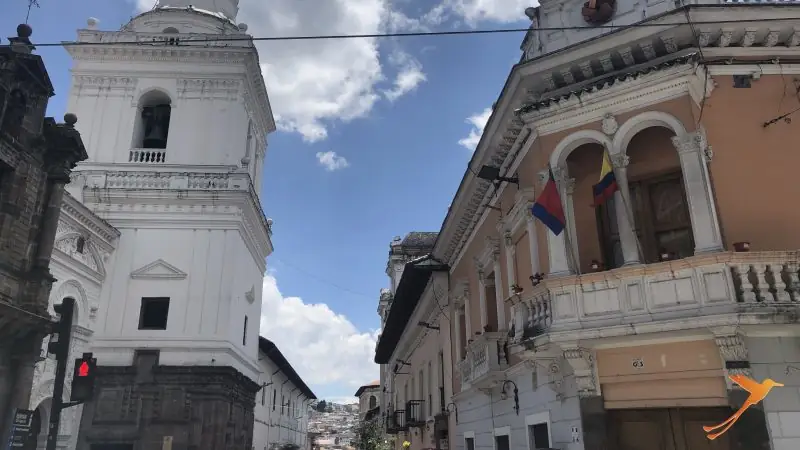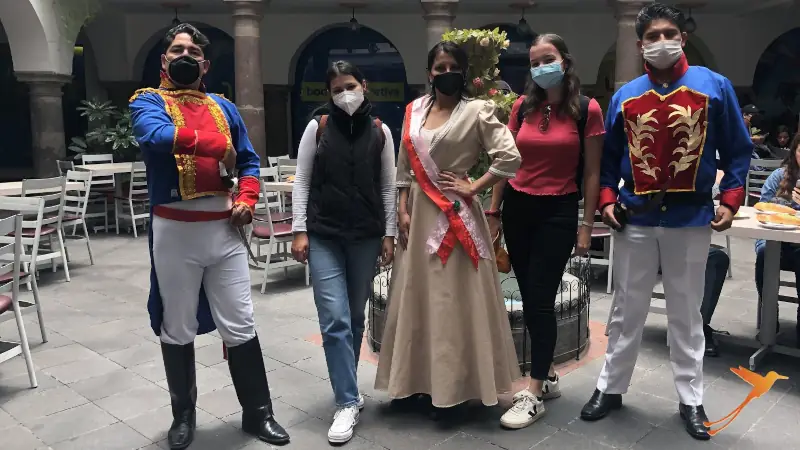
Last week we had the opportunity to take part in a guided tour through the old town of Quito, Ecuador’s capital. The theme of the route is “Romance and Liberators” and takes its guests to the city’s historic churches and squares. Everything revolves around the love story of the independence fighter Simón Boliívar and his lover Manuela Sáenz. Lets explore togehter the GUIDED CITY TOUR QUITO: RUTA ROMANCE Y LIBERTADORES.
Reunion at the Plaza de San Francisco and visit of the Capilla de Cantuña
At 9:50 am, we met with the small group and the city guides Katia and David at the Plaza de San Francisco directly in front of the church named after it. As the sun was shining very strongly in Quito that morning, we took sun hats and sun cream with us, which is highly recommended.
First we went to the Capilla de Cantuña, which is attached directly to the cathedral. David explained to us that the chapel has two other names besides Cantuña: Capilla de la Vera Cruz and Capilla de los Naturales. We were then allowed to enter the chapel and David told us about the legend of the Capilla de Cantuña:
According to the legend, an Indio named Cantuña lived in the old colonial city of Quito and was commissioned by the Franciscans to build the atrium of the Convento Máximo de San Francisco de Quito. He had only a short amount of time for the construction and therefore he became very desperate after some time.
Just then, “Lucifer”, the Lord and Master of Hell, appeared in front of the frightened Indio and ascended from the darkest shadows of darkness and with a deep, hoarse voice he exclaimed: ‘I am here to help you to build the unfinished atrium before the new day dawns, and you will repay me with your soul!’ Cantuña accepted the deal, setting only one condition, which was that all the stones had to be laid. The demon accepted, to him it seemed to be an absurd and easy condition to fulfil.
When the building was finished and Lucifer wanted to confiscate Cantuña’s soul, he said: ‘The deal is off! You agreed to put every single stone in the building, which you didn’t do. One stone is missing!’
At that moment, Cantuña took out a stone from under his poncho, which he had secretly hidden. Lucifer was speechless and that way Cantuña saved his soul.
That was how the great atrium was born, rising solemnly on the parapet of the Convento Máximo de San Francisco de Quito to be the eternal pride of all Quiteños and Ecuadorians.

Iglesia de Compañía and Calle de las 7 Cruces
From the Capilla de Cantuña we then walked on to our next destination: the entrance of the church la Compañía de Jesus de Quito. The facade of the main temple, which is entirely carved out of volcanic stone, is considered one of the most important expressions of baroque architecture in the world. The interior decoration of the church is characterised by the fact that the dome is completely decorated with gold.
Then we walked down the street, Calle de las 7 Cruces (Street of the 7 Crucifixes). It has an amazing number of attractions, such as the City Museum, the Carmen Alto Monastery, the Presidential Palace, the Plaza Grande and also the Ecuadorian Central Bank. The name comes from the fact that it is lined with seven crosses along the street.

The Plaza Grande and the story of Simón Bolívar
The Plaza Grande is the most important square in the historic centre of Quito. It is the hangout of Quiteños, especially older people who sit on the benches all day and chat, but also vendors trying to make their livelihood.
Arriving at this beautiful place, we were allowed to gather in front of the entrance to the cathedral. There, an actor in the costume of the Venezuelan Antonio José Sucre told us about his life as one of the most important marshals under Simón Bolívar in the fight for independence. He also wore a colonial-era uniform, which made his appearance even more expressive and exciting.
The Plaza Grande is surrounded by four buildings that represent the different social classes of Quito: The Presidential Palace, the Archbishop’s Palace, the Quito Cathedral and the City Palace.
From there, an actor playing Simón Bolívar, in an equally impressive uniform, led us to the Benalcazar restaurant. This is the place where the freedom fighter met his beloved Manuela. They danced together and told their story: the fight for freedom connected Bolívar with the Ecuadorian woman, she for instance fought in the battle of Pichincha. Manuela also left behind her husband, with whom she had a fake marriage without love, to be with Simón Bolívar. The love between the two was full of passion.

A successful closing with Colada Morada and Guaguas de Pan
After the beautiful and impressive presentation of the actors, we received a small meal at the restaurant: Colada Morada and a Guagua de Pan. The Colada Morada is a thick drink made of corn flour and a variety of fruits, which is served warm. It is accompanied by a “guagua”, which means child or baby. Therefore, the shape of this biscuit resembles a doll and is decorated colourfully. They are usually filled with jam. Traditionally, both are eaten together on November 02. If you want to know more about all the delicious desserts of Ecuador, check out this blog post.
The dish was a successful end to this little journey into the past and romantic history of Quito.







